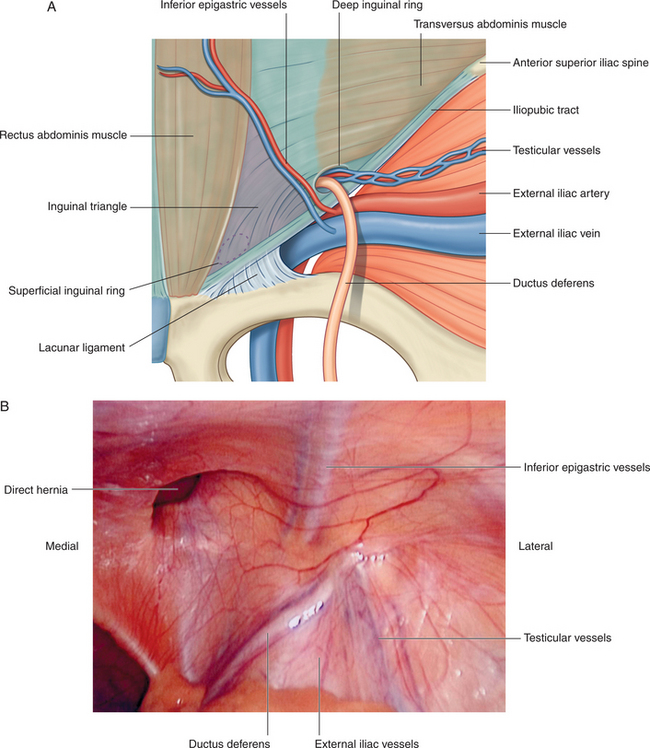CASE 23
A 16-year-old boy, requiring a sports physical examination, was brought to the physician’s office by his father. When the physician performed the examination for an inguinal hernia, he felt an impulse against his fingertip at the superficial inguinal ring. This finding was consistent with an inguinal hernia.
WHAT ARE THE STRUCTURES THAT FORM THE ANTERIOR AND POSTERIOR WALLS, ROOF, AND FLOOR OF THE INGUINAL CANAL?
• The anterior wall is formed principally by the aponeurosis of the external abdominal oblique muscle. The internal abdominal oblique muscles contributes by enhancing the structural integrity of the lateral margin of the anterior wall.
• The posterior wall is formed principally by the transversalis fascia. The conjoint tendon reinforces the medial margin of the posterior wall. The conjoint tendon represents the convergence of the internal abdominal oblique and transversus abdominis tendons as it attaches to the pecten pubis.
WHAT STRUCTURES DEFINE THE BOUNDARIES OF THE INGUINAL (HESSELBACH’S) TRIANGLE?
The three structures that define the boundaries of the inguinal triangle are (Fig. 3-34):
Stay updated, free articles. Join our Telegram channel

Full access? Get Clinical Tree



